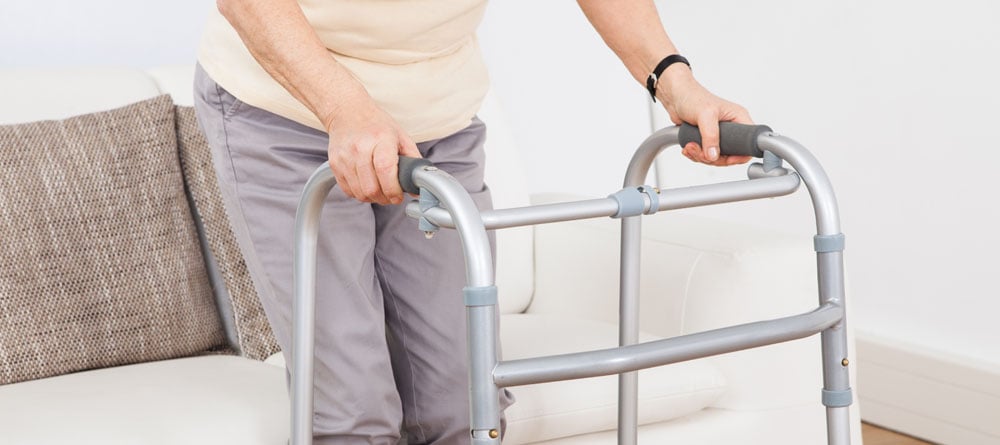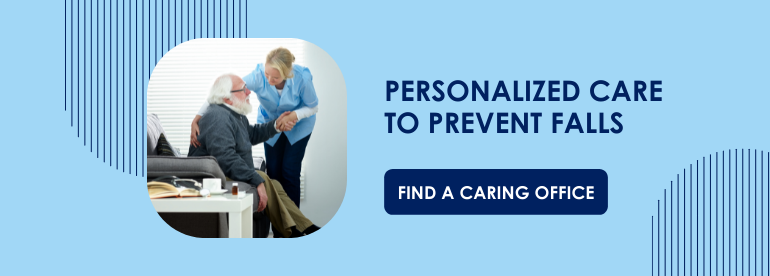As you age, it's important that you know the facts about falling. For example, did you know that women are twice as likely to be injured after a fall? These injuries can lead to a loss of mobility and independence that can be catastrophic—and that means that you need to be prepared to prevent a fall before you think you need it. Let's take a look at why falls happen and how to prevent them.
Fall Statistics
We mentioned that women are more likely to fall than men. Why? One of the big ones is a lack of exercise, which can lead to a loss of muscle tone, bone density, balance, and coordination. But there are many other alarming fall statistics.
1 in every 3 seniors aged 65 and over fall in their homes, resulting in over $30 billion spent annually on healthcare for fall related incidents. While this number constitutes reported falls, it is important to note that in reality, this statistic is higher because of the sheer number of unreported falls in addition to the 25% that fall while admitted in the hospital and 40% while admitted in a skilled nursing facility. What is more, this number increases with age, especially among those who have either fallen before or suffered hip fractures previously.
Here are some additional statistics to consider:
-
More than half of all fatal falls occur to individuals 75 years and older
-
Among people 65-69, 1 of every 200 falls results in hip fractures
-
2/3 of individuals who fall do so again within 6 months
These staggering figures have led the US Congress to pass a bill entitled, “The Elder Fall Prevention Act”. The purposes of this bill are:
-
to develop effective public education strategies to reduce elder falls;
-
to expand needed services and conduct research to determine the most effective approaches to preventing and treating elder falls;
-
and to require the Secretary to evaluate the effect of falls on the costs of Medicare and Medicaid and the potential for reducing costs by expanding education, prevention, and elderly intervention services.
Why Do Seniors Fall?
Case studies and tracking indicate that there are a number of factors responsible for such high numbers such as:
- Environment
- Balance
- Dizziness
- Confusion
- Vision
- Weakness
- Poor auditory condition
- Postural hypo-tension
The most important factor may be environment because many do not realize the presence of many hazards in their home until it is too late.
Falls aren't purely physical. Even active, healthy seniors can still lose their balance and take a tumble. This is particularly true for those who are on medications that can negatively affect their coordination. If the senior has had surgery, or suffers from diseases like Parkinson's, then it's simply more difficult to be coordinated.
And if a senior has experienced a fall, they are more likely to fall again. Perhaps this is due to fear or lack of confidence in their own movement.
Fall Prevention Strategies
One-third of the falls that are suffered by the elderly are preventable. Here some fall prevention techniques to consider for your loved one.
1. Look for hazards in your environment.
Here are some common things that may need to be done around the home:
-
Remove boxes, newspapers, electrical cords and phone cords from walkways.
-
Move coffee tables, magazine racks and plant stands from high- traffic areas.
-
Secure loose rugs with double-faced tape or a slip-resistant backing – or remove loose rugs from your home.
-
Repair loose, wooden floorboards and carpeting right away.
-
Store clothing, dishes, food and other necessities within easy reach.
-
Immediately clean spilled liquids, grease or food.
-
Use nonskid floor wax.
-
Use non-slip mats in your bathtub or shower.
-
Make clear paths to light switches that aren’t near room entrances.
Our Caring team can perform a free Home Care Assessment to see if your home is safe for aging loved ones. Reach out to a team near you to schedule your assessment.
2. Create a plan.
Make an appointment with your doctor to create a fall-prevention plan and ask for a recommended exercise program for you to stay active considering several factors such as your current medications, prior falls, current health condition, muscle strength, and vision.
3. Wear appropriate clothing.
Keep your feet covered in appropriate shoe wear; e.g. no high heels, slick soles etc. Instead, stick with comfortable non-slip socks, have your feet measured often to account for change in foot size, and remember to wear nonskid soles.
4. Adjust lighting around the house.
Keep your home brightly lit to avoid tripping on objects that are hard to see. Use night lights in your bedroom, bathroom and hallways. Have a lamp within reach of your bed. Use glow-in-the-dark or illuminated switches if needed and turn on the lights before going up or down stairs.
5. Install and use assistive devices.
Keep your cane or walker close by, have handrails installed on both sides of the stairs and in the bathroom, have a raised toilet seat and grab bars installed in the tub. Talking with your doctor regularly regarding fall-prevention is your best strategy for preventing falls. Many of these solutions require just a cursory check on the status of your home while others are relatively easily installed and inexpensive.
6. Reduce nighttime wandering.
At night, you're more tired and off-balance. That means that you're going to be more likely to trip and fall. It's also less likely that anyone will realize that you've fallen for several hours. If you frequently get up for a snack or a glass of water, try placing them in your room before you go to bed instead. When you get up to go to the bathroom in the middle of the night, use your cane, walker, or other aids if necessary.
7. Correct medication.
Seniors tend to take a plethora of various medications. It is easy to get confused about which pill to take, so oftentimes, they get mixed up or taken too frequently. This can lead to dizziness or fatigue which is a recipe for falling. Always have medication labeled in an organized container and chart when you have last taken it. Refer to our blog post on medication mishaps to get more tips.
It's important to remember that falls aren't always caused by one thing; sometimes there are a dozen contributors that make it happen. It's impossible to prevent them from ever happening, but if you look at the actual risk, it is definitely possible to take steps to ensure the seniors in your life stay safe. For more ideas on how to prevent falls, consult our Fall Prevention Fact Sheet.


